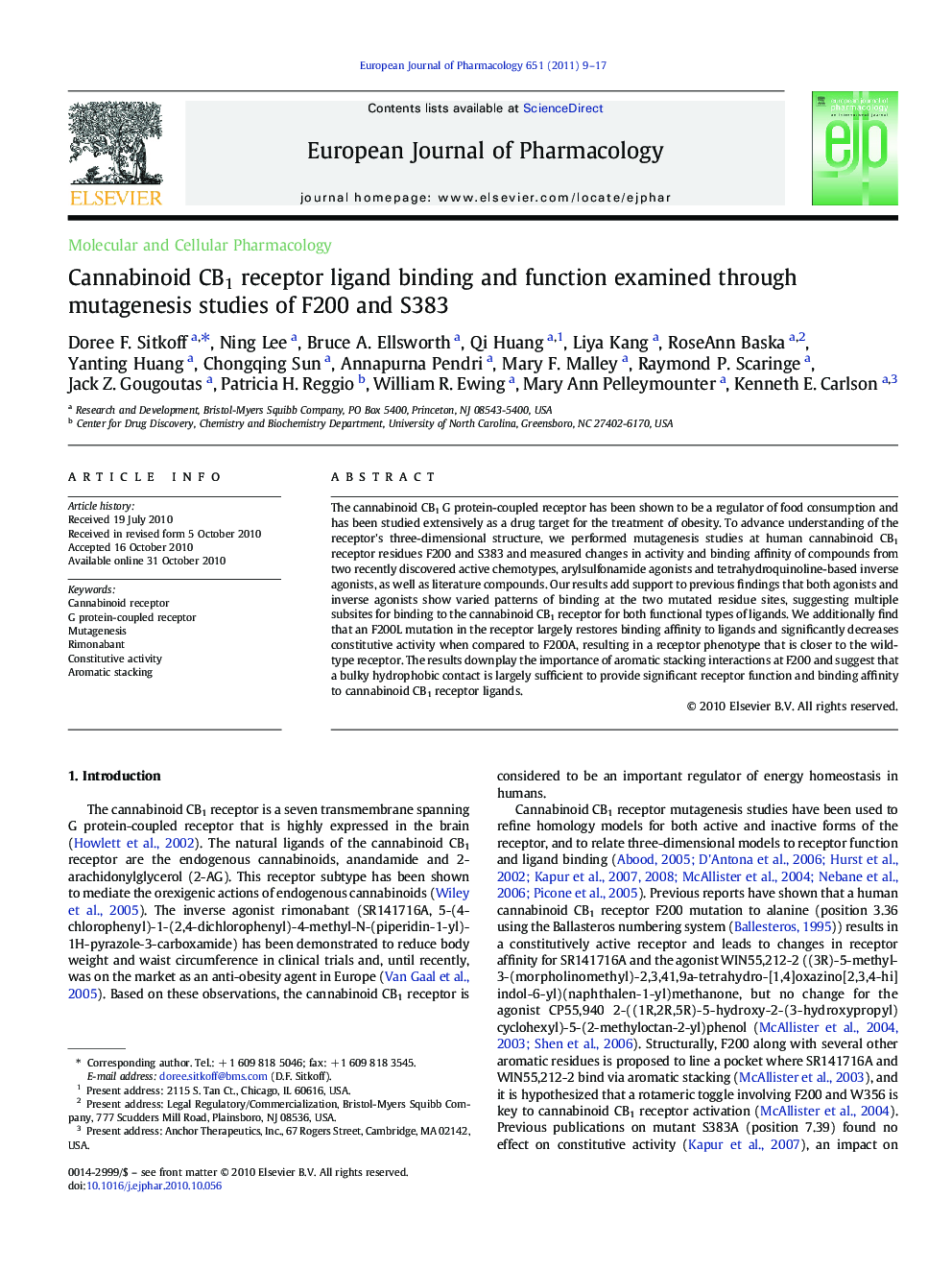| کد مقاله | کد نشریه | سال انتشار | مقاله انگلیسی | نسخه تمام متن |
|---|---|---|---|---|
| 5830456 | 1559039 | 2011 | 9 صفحه PDF | دانلود رایگان |
عنوان انگلیسی مقاله ISI
Cannabinoid CB1 receptor ligand binding and function examined through mutagenesis studies of F200 and S383
دانلود مقاله + سفارش ترجمه
دانلود مقاله ISI انگلیسی
رایگان برای ایرانیان
کلمات کلیدی
موضوعات مرتبط
علوم زیستی و بیوفناوری
علم عصب شناسی
علوم اعصاب سلولی و مولکولی
پیش نمایش صفحه اول مقاله

چکیده انگلیسی
The cannabinoid CB1 G protein-coupled receptor has been shown to be a regulator of food consumption and has been studied extensively as a drug target for the treatment of obesity. To advance understanding of the receptor's three-dimensional structure, we performed mutagenesis studies at human cannabinoid CB1 receptor residues F200 and S383 and measured changes in activity and binding affinity of compounds from two recently discovered active chemotypes, arylsulfonamide agonists and tetrahydroquinoline-based inverse agonists, as well as literature compounds. Our results add support to previous findings that both agonists and inverse agonists show varied patterns of binding at the two mutated residue sites, suggesting multiple subsites for binding to the cannabinoid CB1 receptor for both functional types of ligands. We additionally find that an F200L mutation in the receptor largely restores binding affinity to ligands and significantly decreases constitutive activity when compared to F200A, resulting in a receptor phenotype that is closer to the wild-type receptor. The results downplay the importance of aromatic stacking interactions at F200 and suggest that a bulky hydrophobic contact is largely sufficient to provide significant receptor function and binding affinity to cannabinoid CB1 receptor ligands.
ناشر
Database: Elsevier - ScienceDirect (ساینس دایرکت)
Journal: European Journal of Pharmacology - Volume 651, Issues 1â3, 25 January 2011, Pages 9-17
Journal: European Journal of Pharmacology - Volume 651, Issues 1â3, 25 January 2011, Pages 9-17
نویسندگان
Doree F. Sitkoff, Ning Lee, Bruce A. Ellsworth, Qi Huang, Liya Kang, RoseAnn Baska, Yanting Huang, Chongqing Sun, Annapurna Pendri, Mary F. Malley, Raymond P. Scaringe, Jack Z. Gougoutas, Patricia H. Reggio, William R. Ewing, Mary Ann Pelleymounter,